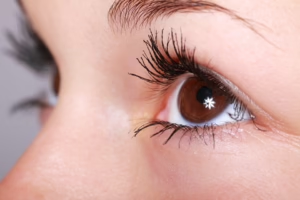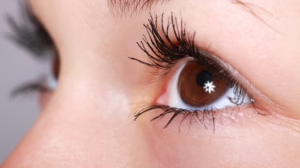The Science of Makeup Removal: Ingredients that Work Wonders
When it comes to skincare, one of the most crucial yet often overlooked steps is makeup removal. While makeup can enhance our features, it can also clog pores, contribute to breakouts, and accelerate the aging process when not removed correctly. The science of makeup removal is rooted in understanding the ingredients that effectively cleanse the skin without causing harm. This article delves into the mechanisms behind various makeup removal products and highlights key ingredients that work wonders for all skin types.
The Importance of Makeup Removal
At the end of the day, our skin endures a barrage of environmental pollutants, perspiration, and makeup. Failing to remove these impurities can lead to various skin issues, including:
- Acne and Breakouts: Clogged pores from leftover foundation and concealer can result in the formation of blackheads and pimples.
- Premature Aging: Makeup residue can contribute to the breakdown of collagen, leading to fine lines and wrinkles.
- Irritation and Inflammation: Some makeup products contain irritating ingredients that can lead to redness, itching, and increased sensitivity.
Consequently, thorough makeup removal is essential for maintaining healthy skin.
The Science Behind Makeup Removal
Makeup removal is a process that relies on the principles of chemistry. Typically, two categories of products are available: oil-based and water-based removers. Understanding how these products work is pivotal to selecting the right one for your skin type.
Emulsion Science
Many makeup removers are emulsions, which combine oil and water to dissolve different types of makeup. The basic idea is that “like dissolves like.” Oil-based makeup removers can dissolve oil-based makeup products, such as waterproof mascara and long-wearing foundation. Conversely, water-based formulas are better suited for water-based makeup.
Surfactants: These are compounds that lower the surface tension between liquids, allowing oil and water to mix more effectively. Surfactants can include:
- Cocamidopropyl Betaine: Derived from coconut oil, this mild surfactant helps to cleanse the skin without stripping its natural oils.
- Sodium Cocoyl Isethionate: A gentle, sugar-derived surfactant that cleanses while moisturizing the skin[1].
pH Balancing
Maintaining the skin’s natural pH is vital. The skin’s surface has a slightly acidic pH ranging from 4.5 to 5.5. Many makeup removers aim to mimic this pH level, thus preserving the skin barrier and preventing irritation.
Formulations that are too alkaline can disrupt the skin barrier, leading to redness and irritation. For instance, some alcohol-based removers can be effective for makeup removal but often leave the skin feeling taut and dry[2].
Key Ingredients in Makeup Removers
1. Oils
Cleansing Oils: These are oil-based formulations designed to break down makeup effectively. The primary oils used in these products include:
- Jojoba Oil: Mimics the skin’s natural sebum and is non-comedogenic. It effectively dissolves makeup without clogging pores.
- Almond Oil: Rich in fatty acids, it nourishes as it cleanses, making it suitable for sensitive skin.
- Castor Oil: Has excellent cleansing properties and can help to draw out impurities from the skin[3].
2. Micellar Water
Micellar water has gained immense popularity due to its ability to cleanse without the need to rinse. It contains tiny oil molecules called micelles suspended in water, which attract makeup and impurities while remaining gentle on the skin.
Active compounds in micellar water include:
- Glycerin: A humectant that draws moisture into the skin while cleaning, ensuring hydration after removal.
- Witch Hazel: A natural astringent that can help reduce inflammation and soothe the skin[4].
3. Makeup Remover Wipes
While convenient, makeup wipes are often criticized for being less effective than traditional cleansers. However, certain formulations include beneficial ingredients:
- Aloe Vera Extract: Known for its hydrating and anti-inflammatory properties, this ingredient can soothe the skin after makeup removal.
- Vitamin E: An antioxidant that helps to nourish the skin and combat the effects of free radicals[5].
4. Biodegradable Ingredients
Environmental concerns have led to the use of biodegradable surfactants in some makeup removers. These include:
- Sodium Lauryl Sulfoacetate: A gentle, plant-derived surfactant that is biodegradable and less irritating than traditional sulfates.
- Cocamidopropyl Hydroxysultaine: A mild surfactant derived from coconut oil that also acts as a thickening agent.
Choosing the Right Makeup Remover
Selecting the ideal makeup remover can significantly impact the health of your skin. Here are some considerations to help guide your choice:
Skin Type Considerations
-
Oily Skin: Opt for oil-based cleansers that contain non-comedogenic oils, such as jojoba or safflower oil, to balance sebum production and effectively remove heavy makeup.
-
Dry Skin: Creamy, hydrating formulations or micellar water with added moisturizers like glycerin are beneficial.
-
Sensitive Skin: Look for fragrance-free options with soothing components like aloe vera or chamomile.
Ingredient Avoidance
Certain ingredients can be problematic for specific skin types:
-
Alcohol: Often found in wipes and some gels, it can be overly drying and irritating for many skin types.
-
Fragrance: Synthetic fragrances can lead to irritation and allergic reactions, particularly in sensitive skin[6].
Sustainability Concerns
As consumers become increasingly environmentally conscious, considering the sustainability of a product’s packaging and ingredients is vital. Look for brands that use recyclable materials and eco-friendly ingredients.
The Ritual of Makeup Removal
Incorporating a proper makeup removal routine is just as essential as the products themselves. Here’s a step-by-step approach to ensure effective cleansing:
Step 1: Pre-Cleansing
If you wear heavy makeup, consider starting with a cleansing oil or balm. Massage it onto dry skin to emulsify makeup, then rinse with water or remove with a cloth.
Step 2: Double Cleansing
Follow up with a water-based cleanser to remove additional residues. This two-step process ensures that your skin is thoroughly cleansed without stripping away essential moisture.
Step 3: Post-Cleansing Care
After makeup removal, it’s crucial to follow up with a hydrating toner or serum. Look for products with hyaluronic acid, glycerin, or antioxidants to restore moisture and protect the skin barrier.
Step 4: Regular Exfoliation
Incorporate gentle exfoliation into your routine 1-2 times a week to remove dead skin cells and further prevent clogged pores. This step can facilitate improved absorption of subsequent skincare products.
Common Myths about Makeup Removal
Myth 1: Makeup Wipes Are Sufficient
While convenient, makeup wipes often fail to remove all makeup, leading to buildup and potentially causing skin issues. They should not replace a thorough cleansing routine.
Myth 2: Only Oily Skin Needs Oil-Based Cleansers
All skin types can benefit from oil-based cleansers. They are effective at dissolving makeup, and non-comedogenic oils can help balance oily skin without causing breakouts.
Myth 3: Cold Water Removes Makeup Better Than Warm Water
Warm water helps to dissolve makeup more effectively than cold water, as it opens pores. However, always rinse with lukewarm or cool water after cleansing to close the pores.
Conclusion
Makeup removal is an essential component of any skincare routine. Understanding the science behind different ingredients and choosing the right products can significantly affect skin health and appearance. By prioritizing effective and gentle removal methods, harnessing the benefits of key ingredients, and adopting a consistent routine, individuals can maintain clean, clear, and healthy skin. Ultimately, committing to proper makeup removal not only preserves the skin’s integrity but also enhances the efficacy of subsequent skincare products, promoting a radiant complexion for years to come.
Footnotes
- “Surfactants in Cosmetics: What They Are and How They Work.” Cosmetics & Toiletries.
- “Understanding pH for Skincare Products: Why It Matters.” Journal of Cosmetic Dermatology.
- “The Benefits and Properties of Castor Oil in Skincare.” International Journal of Cosmetic Science.
- “Witch Hazel and Its Benefits in Skincare.” Dermatology Today.
- “The Role of Vitamin E in Skincare: An Overview.” Journal of Dermatological Science.
- “Fragrance Allergies: Understanding Triggers and Reactions.” American Academy of Dermatology.


























Add Comment